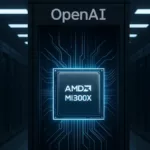Nvidia has unveiled a platform that allows the delivery of a virtualized desktop to any connected device – with the graphics and GPU capabilities of a PC or workstation.
Essentially, this means users can now access a true cloud PC from any device – thin client, laptop, tablet or smartphone – regardless of operating system.

The new platform is primarily targeted at graphic artists using 3D design and simulation tools, which had previously been too intensive for a virtualized desktop.
However, Nvidia CEO Jen-Hsun Huang emphasized that integrating the VGX platform into a corporate network will also enable enterprise IT departments to address the complex challenges of “BYOD” – employees bringing their own computing device to work.
“It delivers a remote desktop to these devices, providing users the same access they have on their desktop terminal,” he explained. “At the same time, it helps reduce overall IT spend, improve data security and minimize data center complexity.”
According to Nvidia exec Jeff Brown, the VGX platform is based on the following three key technologies:
- VGX Boards – Designed for hosting large numbers of users in an energy-efficient manner. The first board is configured with four GPUs and 16 GB of memory, and fits into the industry-standard PCI Express interface in servers.
- VGX GPU Hypervisor – This software layer integrates into commercial hypervisors, such as the Citrix XenServer, enabling virtualization of the GPU.
- User Selectable Machines (USMs)- Allows enterprises to configure the graphics capabilities delivered to individual users in the network, based on their demands.






